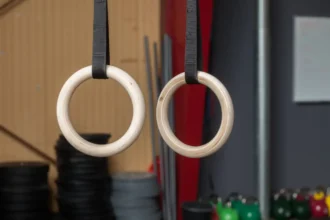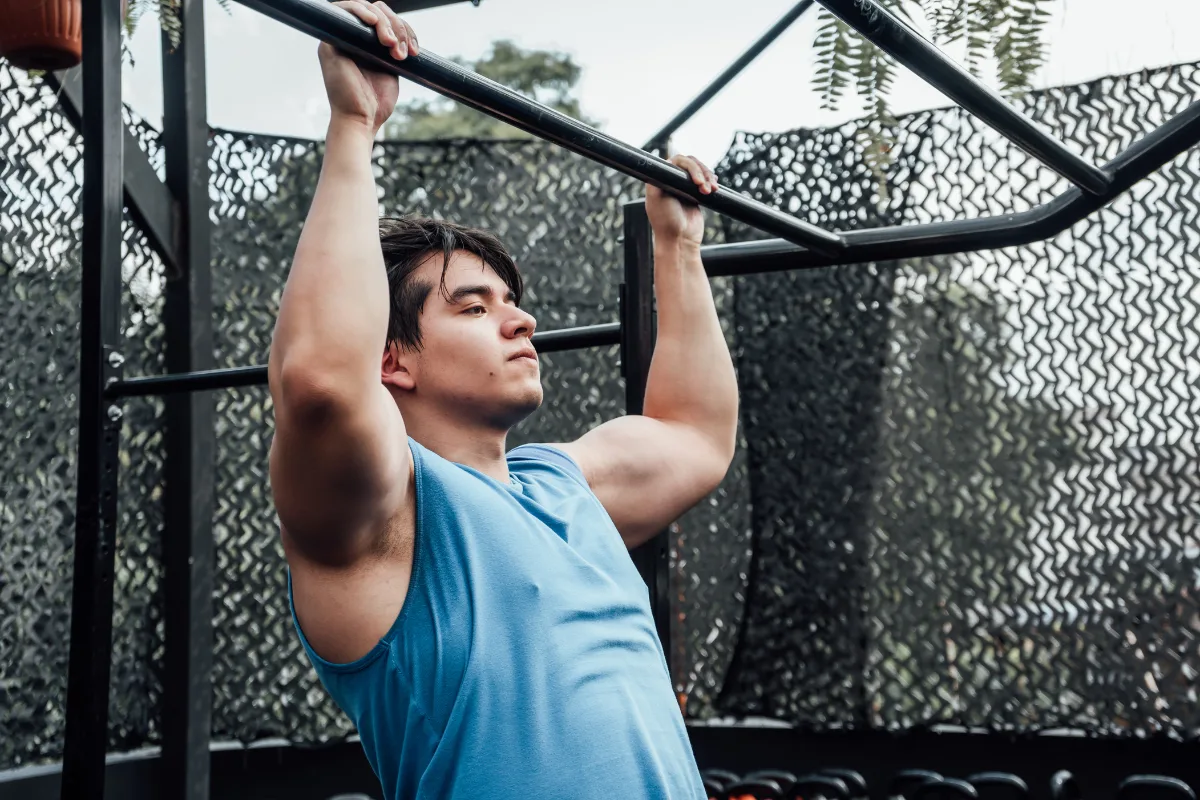When it comes to calisthenics training, one of the biggest debates is whether gymnastics rings or pull-up bars are better. Each has unique advantages, and the right choice depends on your fitness level, goals, and workout preferences.
Some people swear by the versatility of rings, while others rely on the stability and convenience of bars. In this guide, we’ll break down the pros and cons of both, helping you decide which one best suits your training needs.
Why Choose Gymnastics Rings?
Gymnastics rings bring an entirely new level of challenge to bodyweight training. They are highly versatile, engaging more muscles and improving coordination. If you’re looking to enhance functional strength and stability, rings are an excellent choice.
1. Full 360-Degree Rotation for More Muscle Activation
One of the biggest advantages of rings is their ability to rotate freely. This natural movement provides two key benefits:
- Increased Muscle Engagement: Rings allow for subtle wrist adjustments, such as forearm supination (rotating the wrist so the pinky rises above the thumb). This small movement enhances upper-body activation, making exercises like pull-ups, dips, and curls even more effective.
- Greater Stabilization and Core Strength: Because rings are unstable, your muscles work harder to keep you balanced. If you’ve ever tried dips on rings, you probably noticed some shaking at first—this is your stabilizer muscles firing up. Over time, this instability leads to improved coordination, balance, and overall strength. Many people also find that they lean out faster due to increased muscle engagement.
2. More Grip and Hand Position Options
Rings offer complete freedom when it comes to grip positioning. Whether you prefer a pronated (palms down), supinated (palms up), or neutral (palms facing each other) grip, rings adjust to your movement naturally. This flexibility reduces wrist and elbow strain, making exercises like muscle-ups and pull-ups smoother and safer.
3. Greater Range of Motion and Comfort
Unlike pull-up bars, rings don’t restrict your movement. You won’t have to worry about hitting your knees or legs during exercises like tucked front lever rows. This unrestricted range of motion makes certain moves easier to execute while maintaining comfort.
4. Portable and Cost-Effective
If you’re on a budget or need a travel-friendly workout option, rings are a great choice. They’re lightweight, portable, and easy to set up—just hang them from a sturdy structure, like a tree branch, doorway bar, or gym rack. Compared to fixed bars, rings are often more affordable and require minimal space.
Why Choose Pull-Up Bars?
Pull-up bars are a staple in strength training for a reason. They provide a stable, reliable platform for developing upper-body power and endurance. If you’re looking for a straightforward way to build strength, bars might be the better option.
1. More Stability, Easier for Beginners
If you’re new to calisthenics, pull-up bars offer a stable base to build strength. The controlled environment makes it easier to learn movements like dips, L-sits, and muscle-ups without worrying about stability. For beginners, bars can help build confidence and strength more quickly.
2. Widely Available and Accessible
One major advantage of pull-up bars is their availability. Most gyms, outdoor fitness parks, and playgrounds have pull-up bars, making it easy to get a workout in almost anywhere. Rings, on the other hand, require an anchor point, which may not always be accessible.
3. Ideal for High-Rep and Conditioning Workouts
If your focus is endurance, conditioning, or high-rep sets, bars are your best bet. Since bars are stable, you can perform exercises like pull-ups and dips with more speed and volume. Rings generally force slower, more controlled movements, which can be great for strength training but less ideal for high-intensity circuit workouts.
| Feature | Rings | Bars |
|---|---|---|
| Stability | Less stable, requires more stabilization | More stable, easier for beginners |
| Grip Options | Adjustable (pronated, supinated, neutral) | Limited (usually pronated or supinated) |
| Muscle Engagement | Engages stabilizer muscles, core, and more | Less focus on stabilizers, more on conditioning |
| Variety of Exercises | Great for complex, slow, controlled movements | Ideal for high-intensity, fast-paced exercises |
| Portability | Highly portable, easy to pack and carry | Less portable, bulkier |
| Affordability | Generally cheaper, especially basic models | Can be more expensive and bulky |
| Common Availability | Less common in gyms or public spaces | Widely available in most gyms and parks |
| Best For | Advanced athletes or those seeking challenge | Beginners or those focusing on conditioning |
Rings vs. Bars: Which One Should You Use?
The right choice depends on your fitness level and goals.
- For Beginners: Pull-up bars are the best starting point since they provide stability and make learning movements easier.
- For Experienced Athletes: If you already have a solid base of strength, rings will challenge your stability and engage more muscle groups.
- For Strength and Skill Training: Rings are excellent for improving grip strength, joint stability, and full-body coordination.
- For Volume and Conditioning: If you’re focusing on endurance or high-rep workouts, a pull-up bar will allow for more efficient training.
Can You Use Both?
Absolutely! Many calisthenics athletes use a combination of both for a well-rounded approach. A good strategy might be:
- Use a pull-up bar for classic strength-building movements like pull-ups, chin-ups, and muscle-ups.
- Use rings for exercises that emphasize control, mobility, and deeper muscle engagement.
If you’re serious about bodyweight training, incorporating both into your routine can give you the best of both worlds. But if you have to choose just one, consider your goals—stability and strength? Go with bars. Functional strength and control? Rings are the way to go.





